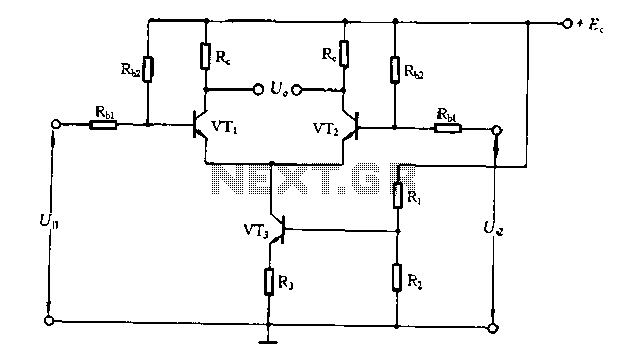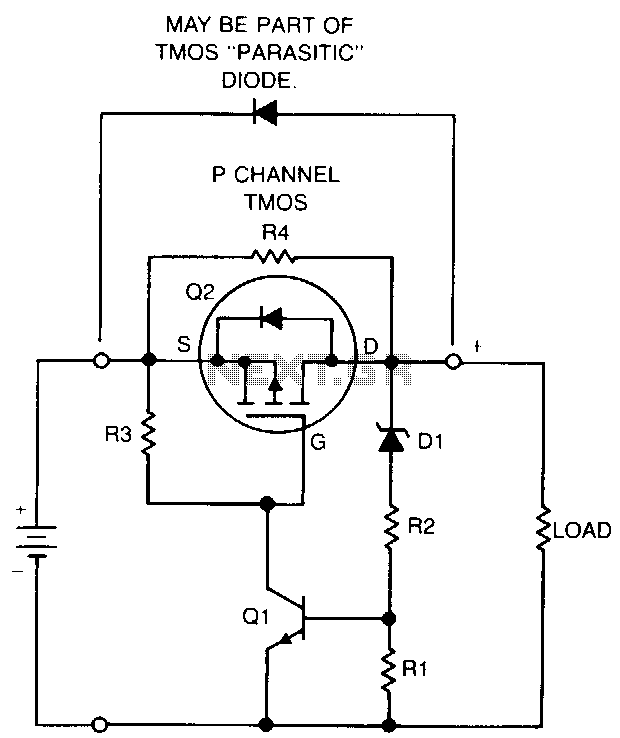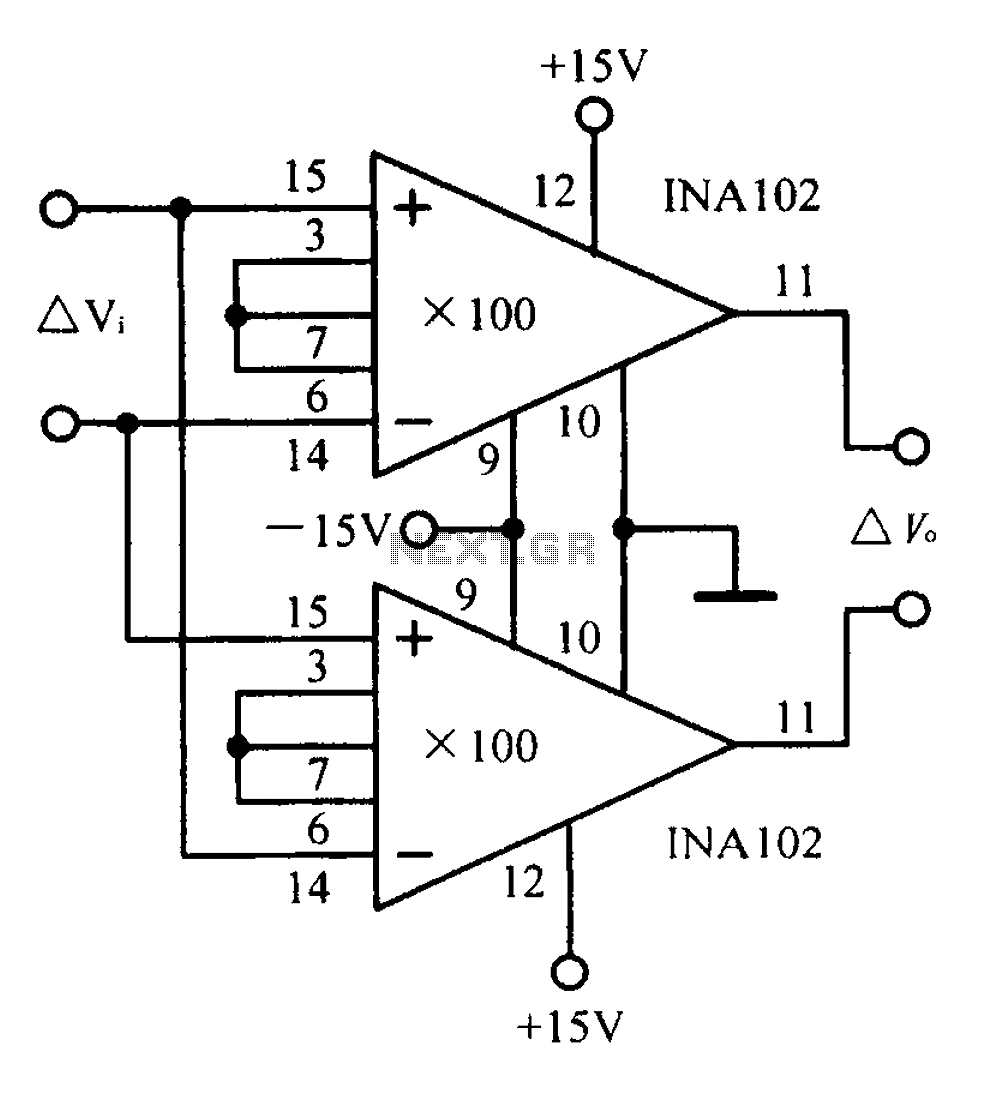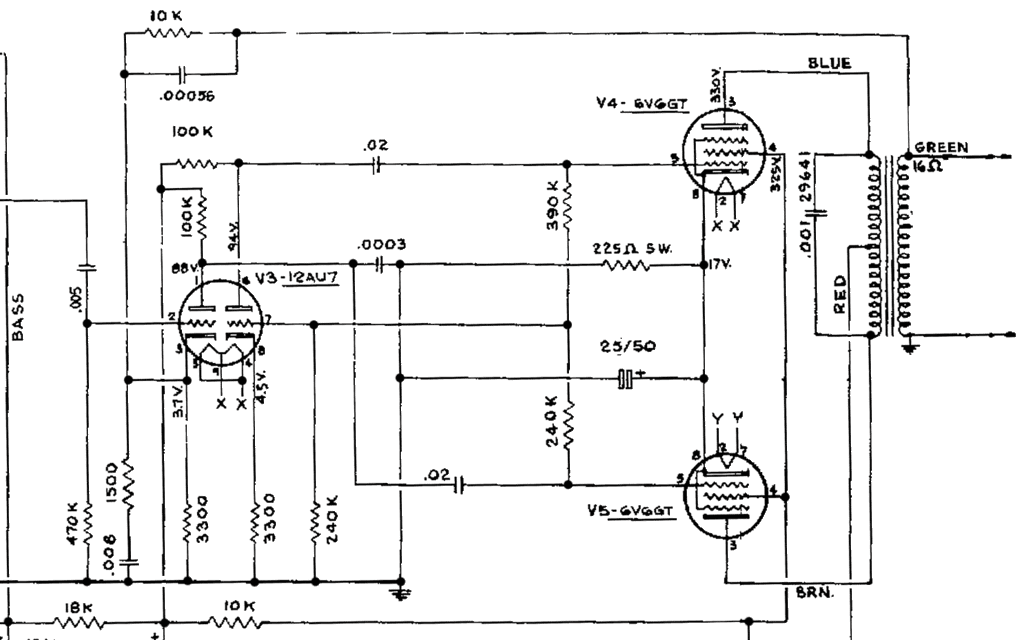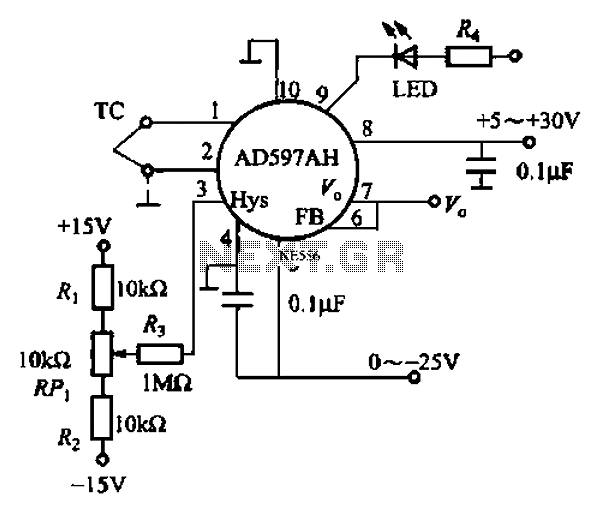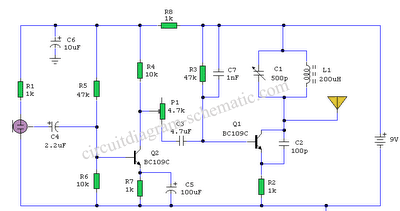
Dual AC radio remote control switch circuit diagram
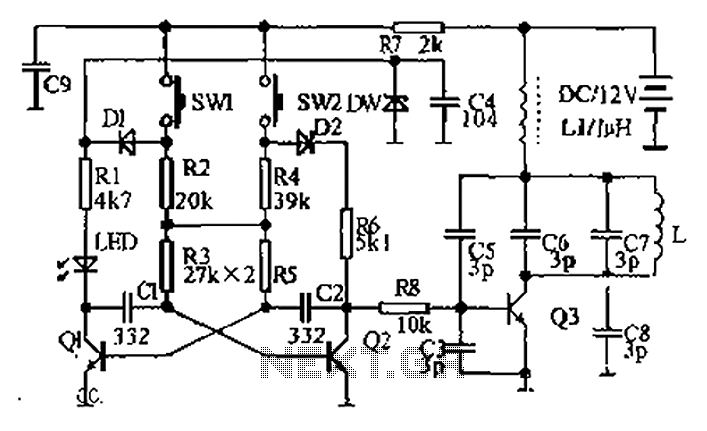
The circuit diagram illustrates a dual radio remote control switch system. The transmitter section features Q3, which generates a high-frequency carrier signal, while Q1 and Q2 form the oscillator circuit. Pressing switch SW1 results in an oscillation frequency of 5 kHz, whereas pressing switch SW2 leads to an oscillation frequency of 3.7 kHz. An LED indicates the operational status of the circuit upon startup. The receiving circuit, comprising Q4 and associated components, demodulates two audio signals. These signals are then processed by Q5 before being fed into the third pins of IC1 and IC2. IC1 is responsible for demodulating the 5 kHz frequency corresponding to the activation of SW1, while IC2 handles the 3.7 kHz frequency linked to SW2. When SW1 is pressed, a pulse is sent from pin 8 of IC1; similarly, pressing SW2 sends a pulse from pin 8 of IC2. These two pulses are directed to the STA401A, which, along with its peripheral components, forms two separate bistable circuits. The pulse from IC1 causes pin 4 of STA401A to go low, activating the TLP3503 optical coupling circuit, allowing current to flow through the load, thereby powering it. The STA401A can also control a relay, and pressing the corresponding button resets the relevant circuit.
The dual radio remote control switch circuit operates effectively by utilizing a combination of oscillators and demodulators to manage multiple frequencies. The transmitter section is designed to generate distinct frequencies based on the switch pressed, allowing for versatile control options. The use of Q3 for high-frequency signal generation ensures reliable transmission over a distance, while the oscillator configuration with Q1 and Q2 enables quick frequency shifts between 5 kHz and 3.7 kHz.
The receiving section is critical for interpreting the transmitted signals. The demodulation process, facilitated by Q4 and Q5, ensures that the audio signals are accurately translated back into control pulses for the bistable circuits. The integration of IC1 and IC2 allows for simultaneous control of two distinct functions, enhancing the circuit’s functionality. The STA401A component plays a pivotal role as it manages the state of the output based on the received pulses, effectively controlling the load and enabling relay operations.
The TLP3503 optical coupling circuit serves as an interface between the low-power control signals and the higher power load, ensuring isolation and protecting sensitive components from voltage spikes. This design choice enhances the reliability and safety of the circuit during operation. The overall architecture of the dual radio remote control switch circuit exemplifies efficient design practices in remote control applications, providing both functionality and ease of use. As shown in FIG AC is a dual radio remote control switch circuit. Transmitter: Q3 generates a high frequency carrier signal. Q1, Q2 composition oscillator circuit. When you pre ss SW1, the oscillation frequency of 5kHz, press SW2, the oscillation frequency is 3.7kHz. When the start-up circuit, LED as work instructions. Receiving circuit: Q4 and peripheral components receiving circuit, two demodulated audio signals, in pre-release Q5, and then into IC1, IC2 of 3 feet. IC1 demodulation frequency 5kHz, the corresponding transmitter SW1, IC2 correspond SW2.SW1 when pressed, IC1 8-pin switch sends a pulse when SW2 is pressed, IC2 pin 8 also sends switch pulses.
Two pulses are fed STA401A. STA401A and peripheral components of two separate bistable circuit. IC1 fed pulse to 4 feet STA401A goes low, TLP3503 (optical coupling circuit) input of a current flowing through the load electrical work. STA401A another way to control relay. Press the appropriate button, STA401A corresponding circuit reset.
The dual radio remote control switch circuit operates effectively by utilizing a combination of oscillators and demodulators to manage multiple frequencies. The transmitter section is designed to generate distinct frequencies based on the switch pressed, allowing for versatile control options. The use of Q3 for high-frequency signal generation ensures reliable transmission over a distance, while the oscillator configuration with Q1 and Q2 enables quick frequency shifts between 5 kHz and 3.7 kHz.
The receiving section is critical for interpreting the transmitted signals. The demodulation process, facilitated by Q4 and Q5, ensures that the audio signals are accurately translated back into control pulses for the bistable circuits. The integration of IC1 and IC2 allows for simultaneous control of two distinct functions, enhancing the circuit’s functionality. The STA401A component plays a pivotal role as it manages the state of the output based on the received pulses, effectively controlling the load and enabling relay operations.
The TLP3503 optical coupling circuit serves as an interface between the low-power control signals and the higher power load, ensuring isolation and protecting sensitive components from voltage spikes. This design choice enhances the reliability and safety of the circuit during operation. The overall architecture of the dual radio remote control switch circuit exemplifies efficient design practices in remote control applications, providing both functionality and ease of use. As shown in FIG AC is a dual radio remote control switch circuit. Transmitter: Q3 generates a high frequency carrier signal. Q1, Q2 composition oscillator circuit. When you pre ss SW1, the oscillation frequency of 5kHz, press SW2, the oscillation frequency is 3.7kHz. When the start-up circuit, LED as work instructions. Receiving circuit: Q4 and peripheral components receiving circuit, two demodulated audio signals, in pre-release Q5, and then into IC1, IC2 of 3 feet. IC1 demodulation frequency 5kHz, the corresponding transmitter SW1, IC2 correspond SW2.SW1 when pressed, IC1 8-pin switch sends a pulse when SW2 is pressed, IC2 pin 8 also sends switch pulses.
Two pulses are fed STA401A. STA401A and peripheral components of two separate bistable circuit. IC1 fed pulse to 4 feet STA401A goes low, TLP3503 (optical coupling circuit) input of a current flowing through the load electrical work. STA401A another way to control relay. Press the appropriate button, STA401A corresponding circuit reset.
Warning: include(partials/cookie-banner.php): Failed to open stream: Permission denied in /var/www/html/nextgr/view-circuit.php on line 713
Warning: include(): Failed opening 'partials/cookie-banner.php' for inclusion (include_path='.:/usr/share/php') in /var/www/html/nextgr/view-circuit.php on line 713
